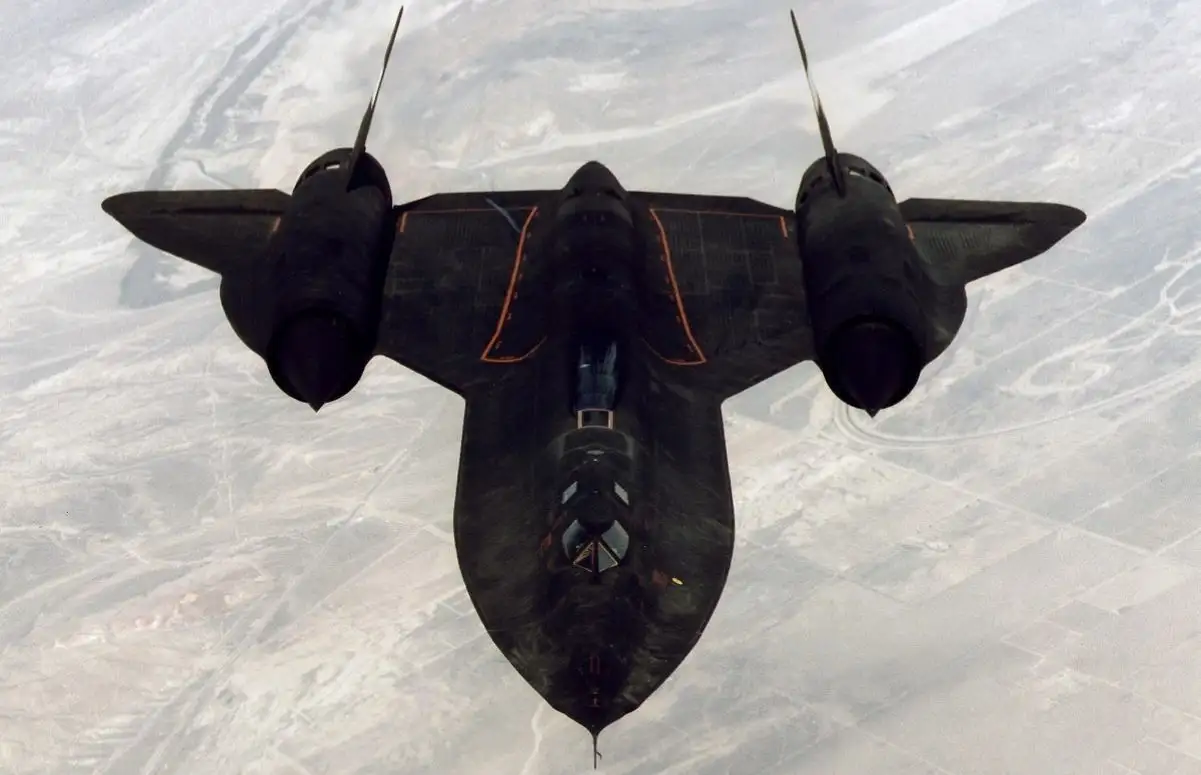The Blackbird
The long-range, advanced, strategic reconnaissance aircraft, the SR-71, also referred to unofficially as the “Blackbird,” was created from the Lockheed A-12 and YF-12A. The 4200th (later 9th) Strategic Reconnaissance Wing at Beale Air Force Base, California, received the first SR-71 to begin service in January 1966. The first SR-71 flight occurred on December 22, 1964.
Throughout its nearly 24-year career, the SR-71 remained the world’s fastest and highest-flying operational aircraft. From 80,000 feet, it could survey 100,000 square miles of Earth’s surface per hour. On July 28, 1976, an SR-71 set two world records for its class — an absolute speed record of 2,193.167 mph and an absolute altitude record of 85,068.997 feet.
For almost 24 years, the SR-71 held the record for being the fastest and highest-flying operational aircraft in the world. It could cover 100,000 square miles of the Earth’s surface per hour from 80,000 feet. Two world records for its class were set on July 28, 1976: an absolute speed record of 2,193.167 mph and an absolute altitude record of 85,068.997 feet.
The US Air Force formally retired its SR-71 fleet on January 26, 1990, citing rising operating costs and decreasing defense budget.
The USAF General who killed the SR-71 program
However, these were not the real causes of the SR-71 program’s demise, according to Jim Goodall, a military historian and the author of Lockheed SR-71 Blackbird: The Illustrated History of America’s Legendary Mach 3 Spy Plane. Goodall served in the USAF and the Minnesota Air Guard for 27 years.
He explained;
‘As a military historian and a published author, I have a good understanding of how and why the Blackbirds were put to rest long before their time.
‘In 1985, General Jerry O’Malley was the Air Force Chief of Staff and was a very strong supporter of the Blackbird. It may be that he was the first Air Force pilot to fly the very first SR-71 Blackbird over enemy territory, that is, North Vietnam. General O’Malley loved the Blackbird and all the maintenance, built, supported, and flew “Kelly’s Black Jet.”
‘On 20 APR 1985, the first Air Force officer to fly an operational mission in an SR-71 was killed in a plane crash that also killed his wife and two Other military officers.
‘His next in command was his Deputy Chief of Staff (AFCS), General Larry Welch. General Welch did not have the same warm and fuzzy feelings that General O’Malley had toward the SR-71. The reason? Welch was turned down to fly the SR-71 when he was a major, he was not that good of a pilot, which was a requirement to be considered for the prestigious position of being a crew member of the world’s fastest operational aircraft.’
The pain of losing out on flying the Blackbird
He continued;
‘The pain of losing out on flying the SR-71 was bitter pill that Welch had a hard time swallowing. His first order of business once he took over and Air Force Chief of Staff was to do everything in his power to kill the program. He sent out a memo that stated, If anyone under his command said anything negative about the Blackbird’s, he was fine with that. But, if anyone, from the lowly E-1 Airman Basic to the O-10 general level, they were going to have to live with the repercussions to their careers.
‘So, pulling every string and favor he could, Welch effectively killed the Blackbirds. The Russians, the North Vietnamese, the Chinese and the Israelis couldn’t shoot one down using their best pilots, and a second rate general, who wasn’t good enough to take control of a plane that moves through the air at 3,400 feet per second, or two miles every three-seconds took down the entire fleet. Last operational SR-71 flew on 09 March 1990, six months prior to Saddam invading his neighbor.
‘To make matters worse, during the beginning of Desert Shield, Air Force contacted the Skunk Works in early September and asked what it would take to have one SR-71A reactivated and operationally ready for the up coming war in Iraq. It took Ben R. Rich, then President of the Lockheed Skunk Works about ten days to have answer.
Reinstating the Blackbirds and making the man who killed the SR-71 program look bad

‘Ben told Air Force, that he needed a gold-plated authorization letter to cut through all the red tape, a blank check, access to all sensors, Air Force support, and electronics, then in storage, and his pick of both operational pilots and ground crew. Once the “Go” was given, he would guarantee that the Blackbird would be fully operationally ready.
‘Air Force told Ben to hold that though. About a month later, they got back to Ben. They asked what it would take to have a second SR-71 ready? Ben said he already had the answer, 30 days, start to operational readiness.
‘It’s now late October/early November 1990. Finally, after waiting over 70 days for a reply as to when could Lockheed expect the ‘Go-a-head” for reactivation of two SR-71s. He was told, and he told me in a meeting I had with him after he retired. He was told that since the program was canceled by the total lack of support at the Air Force Chief of Staff’s office, to reinstate the Blackbirds now would make the AFCS, that be Welch, look bad.’
Goodall concludes;
‘So much for waving Old Glory and petty backstabbing by the Jack Ass that was the reason the program was killed. He should be charged with treason, found guilty, and e******d, but not necessarily in that order.
‘Cheers… Jim Goodall, USAF (ret).’
Check out Habubrats SR-71‘s Twitter profile and Born into the Wilde Blue Yonder Habubrats‘s Facebook page for further Blackbird photos and stories.
Photo by Lockheed Martin, U.S. Air Force and NASA

